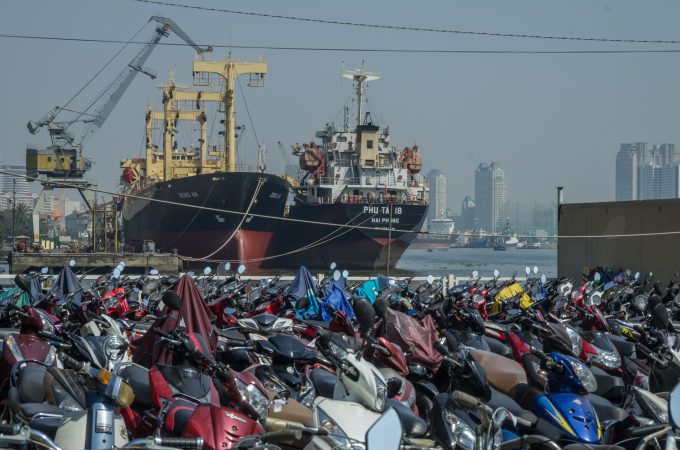Airfreight shift as Taiwan earthquake impacts semiconductor production
The airfreight market could see a temporary shift, owing to changes in semi-conductor production, following ...

Vietnam’s shippers, freight forwarders and ports have been left reeling after the collapse of Hanjin Shipping.
A manager at now-defunct subsidiary Hanjin Vietnam told The Loadstar more than 3,000 Vietnamese containers were caught up in the crisis, including approximately 1,500 import boxes held up at origin ports; 400 held in sellers’ warehouses; and 1,300 export containers stranded in terminals or on Hanjin vessels.
Textiles, garments, furniture, footwear and fish are likely to make up the majority of the exports heading to the US or East Asia, the manager said.
“The worst situation now is with those containers which belong to the vessels stranded at outer anchorage or under arrest. We have been trying our best to get them all released by seeking legal protection filing as well as funding invested by head office or by our chairman’s own pocket,” he added.
The Vietnam Association of Seafood Exporters and Producers estimates that at least 150 reefers containing frozen seafood bound for the US were booked with Hanjin, their fate now uncertain with cargo trapped on board Hanjin vessels, terminals or elsewhere.
Tran Kim Yen, director of NYD Logistics, told VN Express she had 20 Hanjin consignments held up in Malaysia, Singapore and South Korea.
“We are paying up to $80 a day for a container sitting in Singapore,” she told the newspaper. “It will cost an estimated $4,000 for a container to be shipped back to Vietnam, or $7,000 for a container to continue its journey to Europe.”
Hanjin handled about 5% of Vietnam’s container throughput, according to the Vietnam Maritime Administration (Vinamarine), which suggested local port authorities should permit Hanjin ships to call and unload their cargo.
This appears to have happened with the Hanjin Chennai, which berthed in Ho Chi Minh City this week.
The 2,553 teu ship, which was carrying around 700 containers for Vietnamese importers, had been stranded off the coast of nearby Vung Tau for fear of arrest. The three-week delay had a big impact on local businesses frantically awaiting their cargo, some of which have already suffered financial losses due to late deliveries or spoiled fresh food.
The dilemma for Vietnamese importers, as elsewhere, is in the legal challenges mounted by ports and other creditors to recover Hanjin’s debts.
A source at the northern port of Hai Phong, a major industrial hub, said that although no Hanjin vessels called at the port, the Korean carrier owes $100,000 in unpaid storage and handling fees for slot swap-boxes on other carriers’ vessels.
“It’s not only us, but other ports in Vietnam are now trying to solve the problem by keeping Hanjin’s empty boxes at the terminal yard, only releasing them when the debt is settled,” the source said.
He added: “Nevertheless, many carriers request us to also keep Hanjin’s laden boxes and only release to shippers when they finalise the financial problem with Hanjin.
“There’s been no solution given by Hanjin so we can only keep their equipment and wait for their feedback.”
Ho Chi Minh City terminals Saigon Newport and Vietnam International Container Terminal are also owed $2.5m and $80,000 respectively.
Jan Segers, business development manager for Van Moer Logistics, said they had been able to recover Hanjin export cargo and reload to other vessels, with the extra costs covered by exporters.
“The biggest problem are the containers on the way to final destination ex-Vietnam via transhipment. Here we have to change the master bill of lading and consign the cargo to our agent in the transhipment port.
“They will unload everything and reload in containers to be shipped with other carriers to final destination,” he added.
Mr Segers said another consequence was that Asia-Europe freight rates had not dropped the “same way as previous months because shipping lines are keen not to be the next victim of their pricing policy.”
Comment on this article